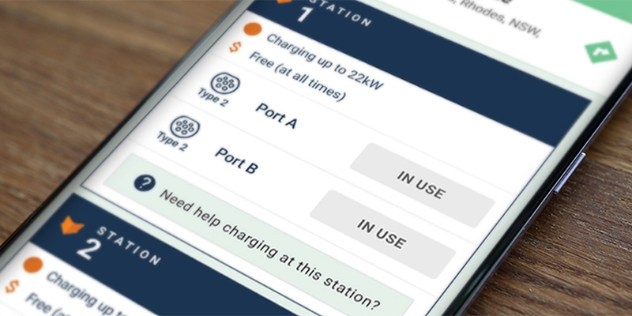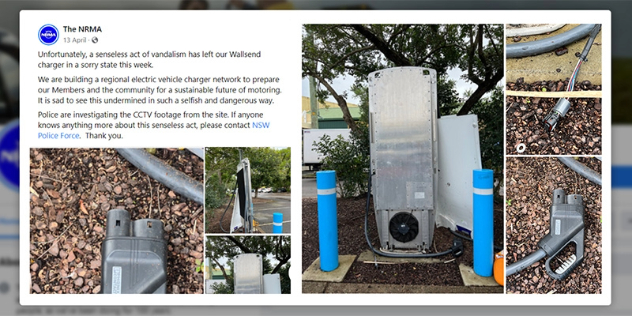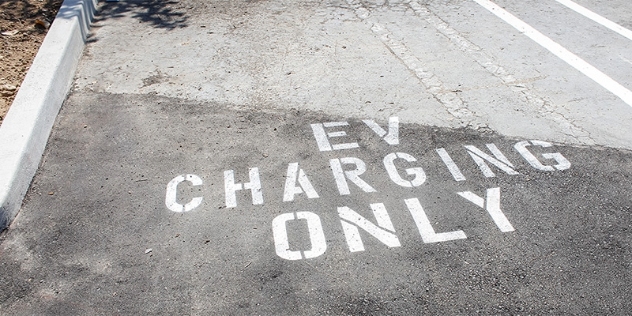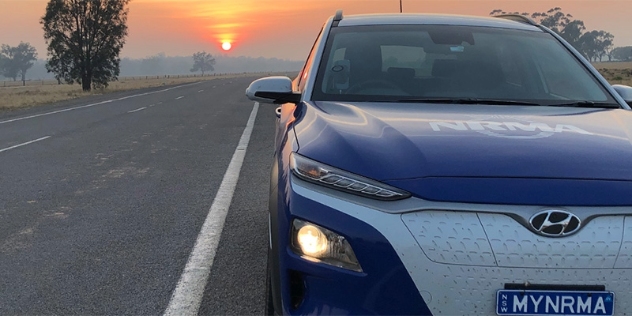
The introduction of any major new technology invariably goes through a period of adjustment around the etiquette of its use. In the case of electric vehicles (EVs), much of the discussion on proper etiquette has naturally centred on public charging stations where wait times and range anxieties can converge to fray the nerves of even the most patient drivers.
High petrol prices and the proliferation of more affordable EVs on the Australian market has seen rates of EV ownership rise in recent times. While most EV drivers will charge their cars overnight at home for the daily commute, many will inevitably lean on the public charging network, particularly when travelling afar, putting it under increasing pressure.
The NRMA fast charging network has been deliberately placed in regional sites where charging options are low, ensuring no one is left behind in an electric future. However, this might also mean that the high demand for its chargers makes them even more likely to become flashpoints for drivers behaving badly.
Until charge times come down to five minutes or less (yes, it will soon be possible – see StoreDot) and EV chargers gradually take over petrol stations everywhere, there’s going to be a need for following EV charging etiquette.
While the only clear-cut rule for any situation is to be polite and considerate to your fellow drivers, you can ensure you’re always on the right side of any disagreement by following these simple steps
At the top of any list of lapses in EV charging etiquette would have to be drivers who leave their EV unattended on charge for longer than they need to. This is sometimes referred to as ‘camping’ and is a source of great frustration for other EV drivers waiting to use the charger.
It’s important to be aware of what type of charger you’re using and how long it will take to charge your vehicle. Public chargers are usually ‘Level 2’ or ‘Level 3’ chargers.
Level 2 are AC (Alternating Current) ‘wall box’ charge points typically found at shopping centre, university or hotel carparks and will deliver around 40–100km of charge per hour. Level 3, such as the NRMA’s network, are DC (Direct Current) fast chargers that will deliver around 70km range for every 10 minutes of charge time.

While it’s perfectly acceptable to leave your vehicle on the charger while you go grab a coffee or quick bite to eat, it’s recommended you download and use the smartphone apps PlugShare and NeedToCharge that will allow other drivers to contact you should they need to check how long you’ll be. This is the best way to prevent any grumbles from those waiting in line on your return.
Needless to say, please don’t park in a charging spot if you’re not plugging in. It’s not a free park for you just because you drive an EV, and you may also face a fine for doing so.
It’s common sense and courtesy to leave the charger in the condition you found it. Hang up the cord when you’re done to reduce the chance of it being run over and damaged.

If the unit is impaired, it’s helpful to report it to the NRMA or other charging operator as soon as possible. And don’t leave rubbish behind or attach any notices to the charger.
This practice is called ‘ICEing’ and refers to internal combustion engine (ICE) vehicles that park in a specially marked EV charging spot. Parking an ICE vehicle in an EV charging spot is the same as an EV blocking a fuel pump.
Nobody wants to be inconvenienced, least of all when trying to refuel or recharge to get to where you are going. And, since EV infrastructure is still growing, these EV charging spots need to be accessible for EV owners at all times.
However, if an ICE vehicle is parked in an EV charging spot, it's important to remember the owner may not realise this. And, they may not know that blocking EV chargers can attract a hefty fine. EVs that are parked in an EV charging spot, but are not charging, can also attract a fine.

In December 2020, Victoria became the first Australian state to implement fines for non-electric car drivers parking in EV charging spots, with the minimum penalty set at $99. Queensland followed suit in February 2022 where offenders face a $55 fine, while in New South Wales, as of November 2022 fines for parking your ICE vehicle in a designated EV charging location can attract a hefty fine of up to $2,200. Other states have since followed suit, with the most recent being South Australia.
Ideally, try speaking to the owner of a vehicle and asking them to move if it is blocking a charger. If that doesn't work, you can use the Snap Send Solve website to report misuse of an EV charging bay. If it is an NRMA charger, you can also call 1300 233 544 with the details. Note however, in privately owned carparks it is up to management to ask council rangers to implement fines.
Visit here for a full list of fines for blocking EV chargers.
Even if another driver has breached EV charging etiquette in your eyes, it is important to keep your cool. Don’t be tempted to leave angry notes on windscreens, yell at other drivers or try to unplug their unattended vehicles from the charger (although we haven’t met an EV that will let you unplug while charging).
Planning your EV charging ahead of time will help reduce your stress levels. Different chargers can have their own smartphone apps, such as Chargefox, which will show you charging locations and whether they’re currently in use. It’s also a clever idea to always use your second-last charging location preference so you’ll have a back-up if there’s a problem.
At busy DC fast charging stations, it’s worth considering other EV drivers in the line. Unless it's absolutely necessary, it's best not to charge all the way to 100 per cent. The charge time in EVs slows down considerably between 80 and 100 per cent charge. Some EV manufacturers also recommend keeping your vehicle charged between 20 and 80 per cent to prolong the battery life.

But the fact remains that if you need to recharge your EV to 100 per cent, you are well within your rights. This is especially true for road trips in country areas where you need to have as much range as you can for the next leg of the journey, which is hardly something other EV drivers should hold against you.